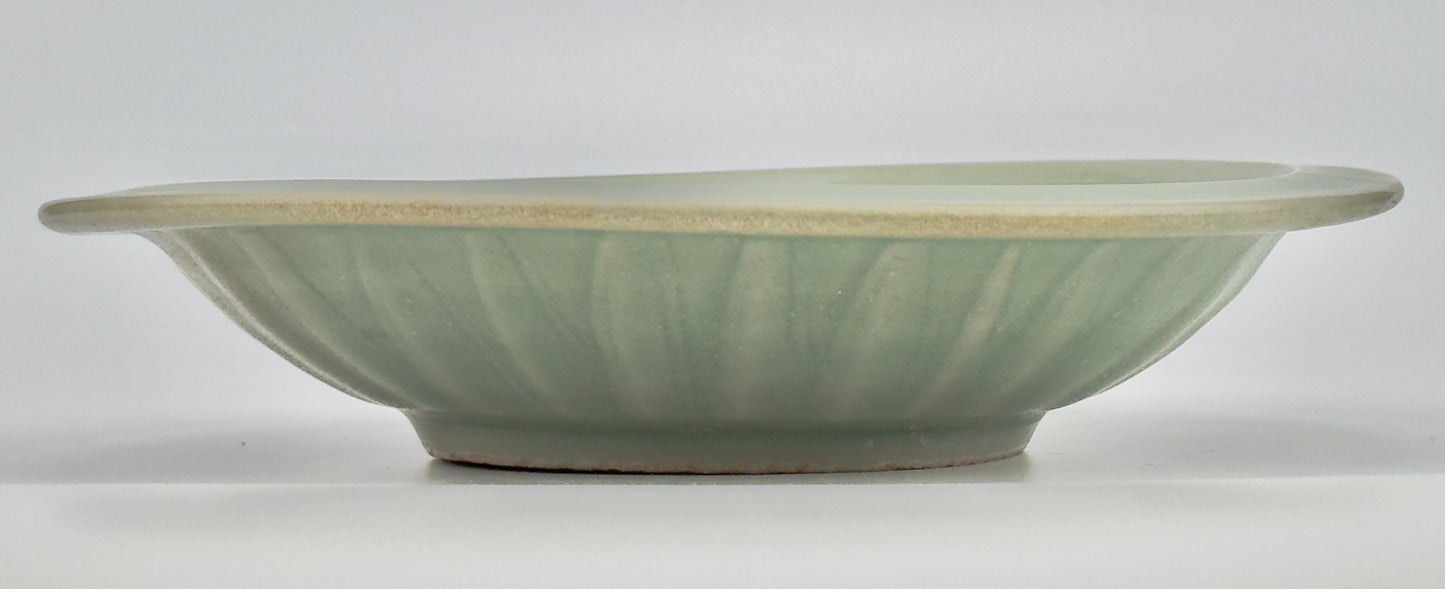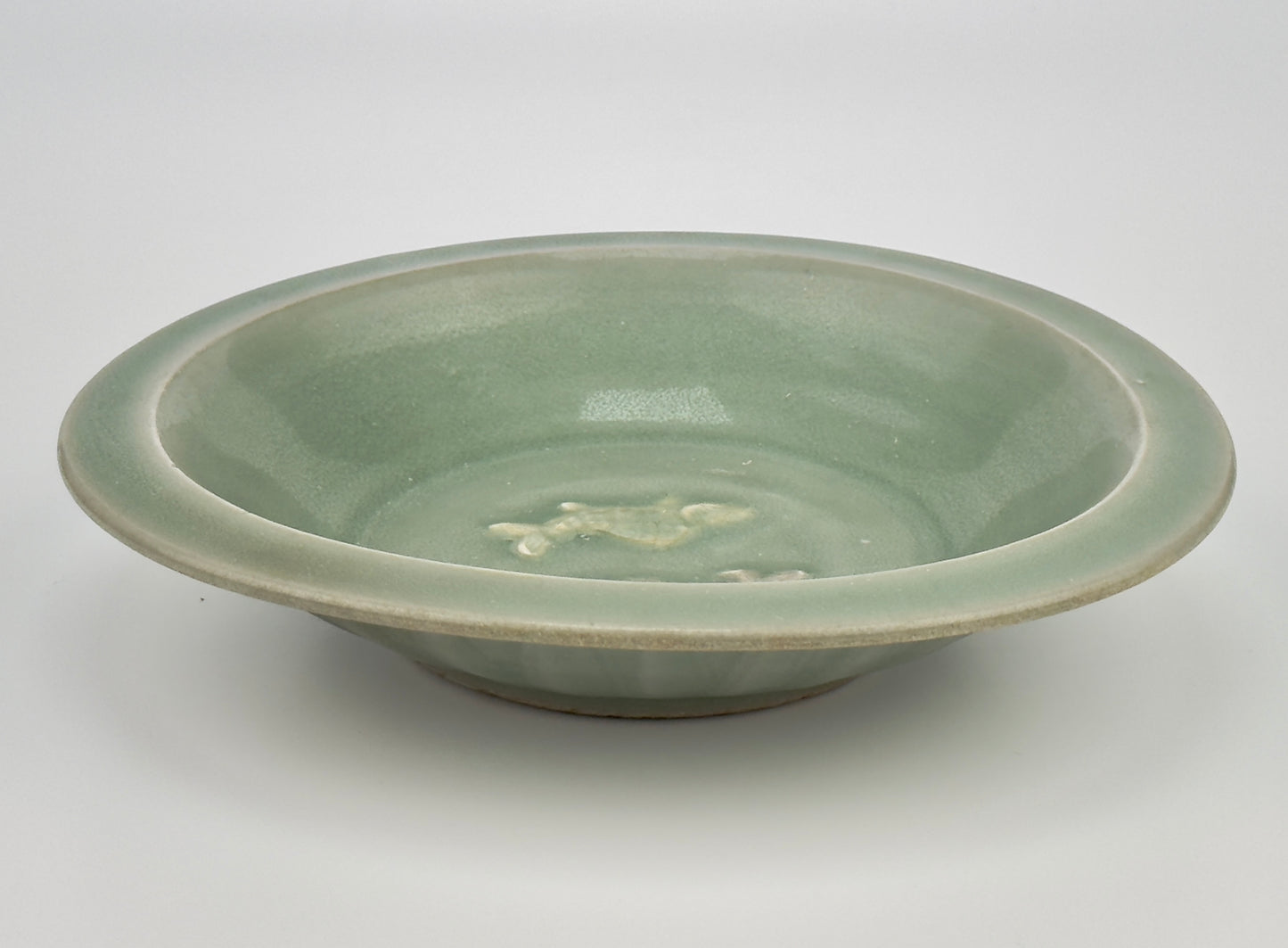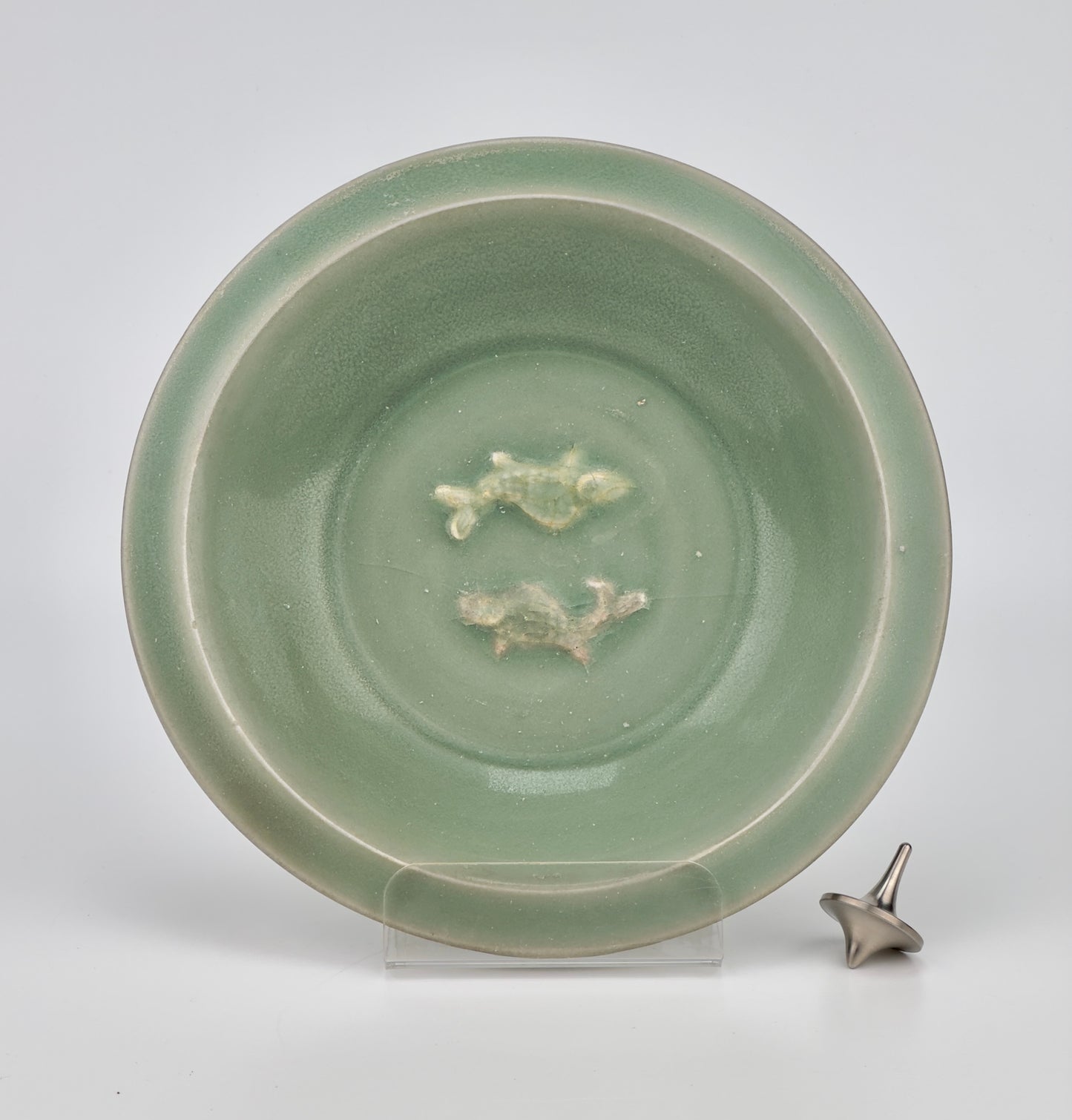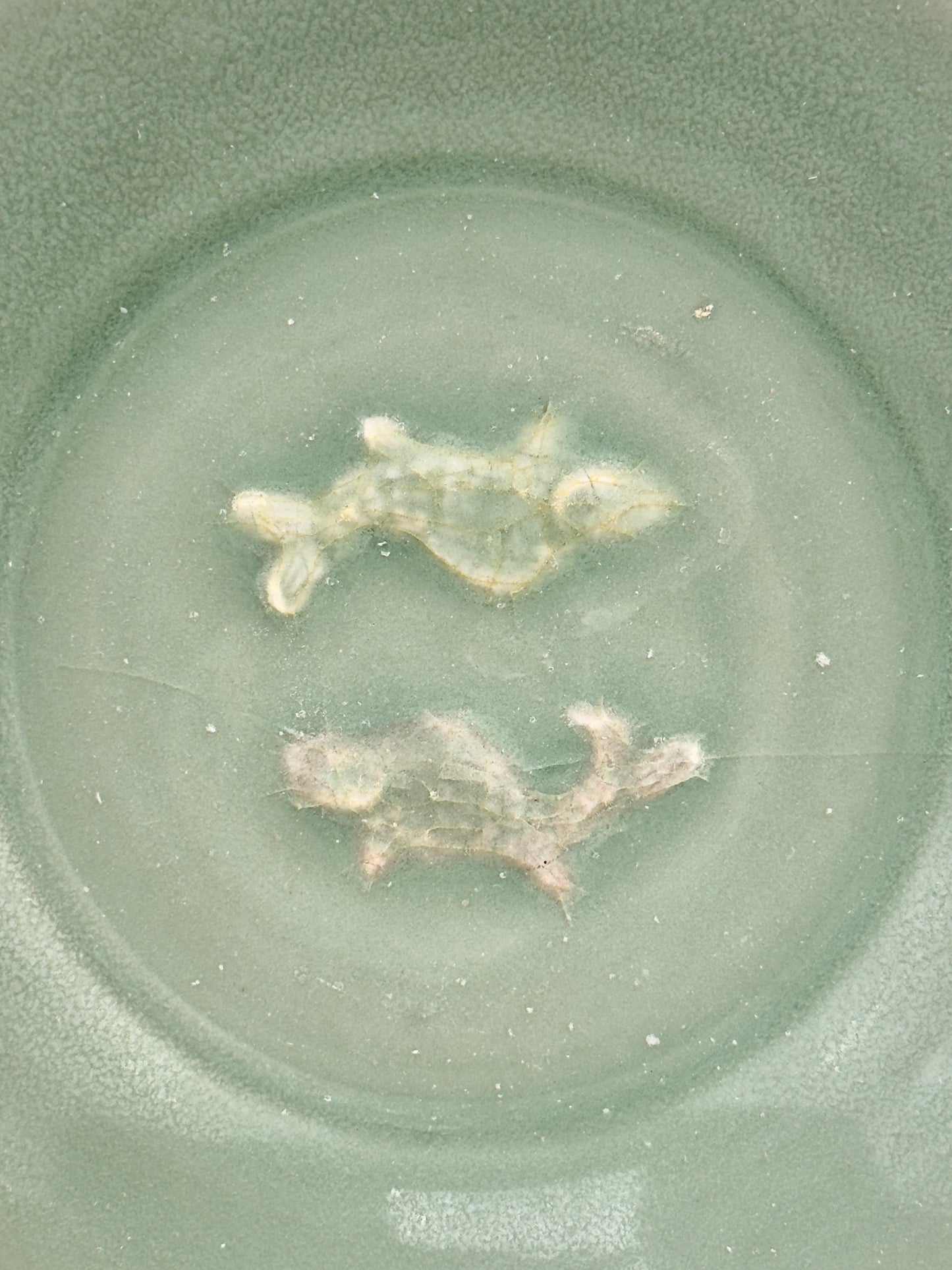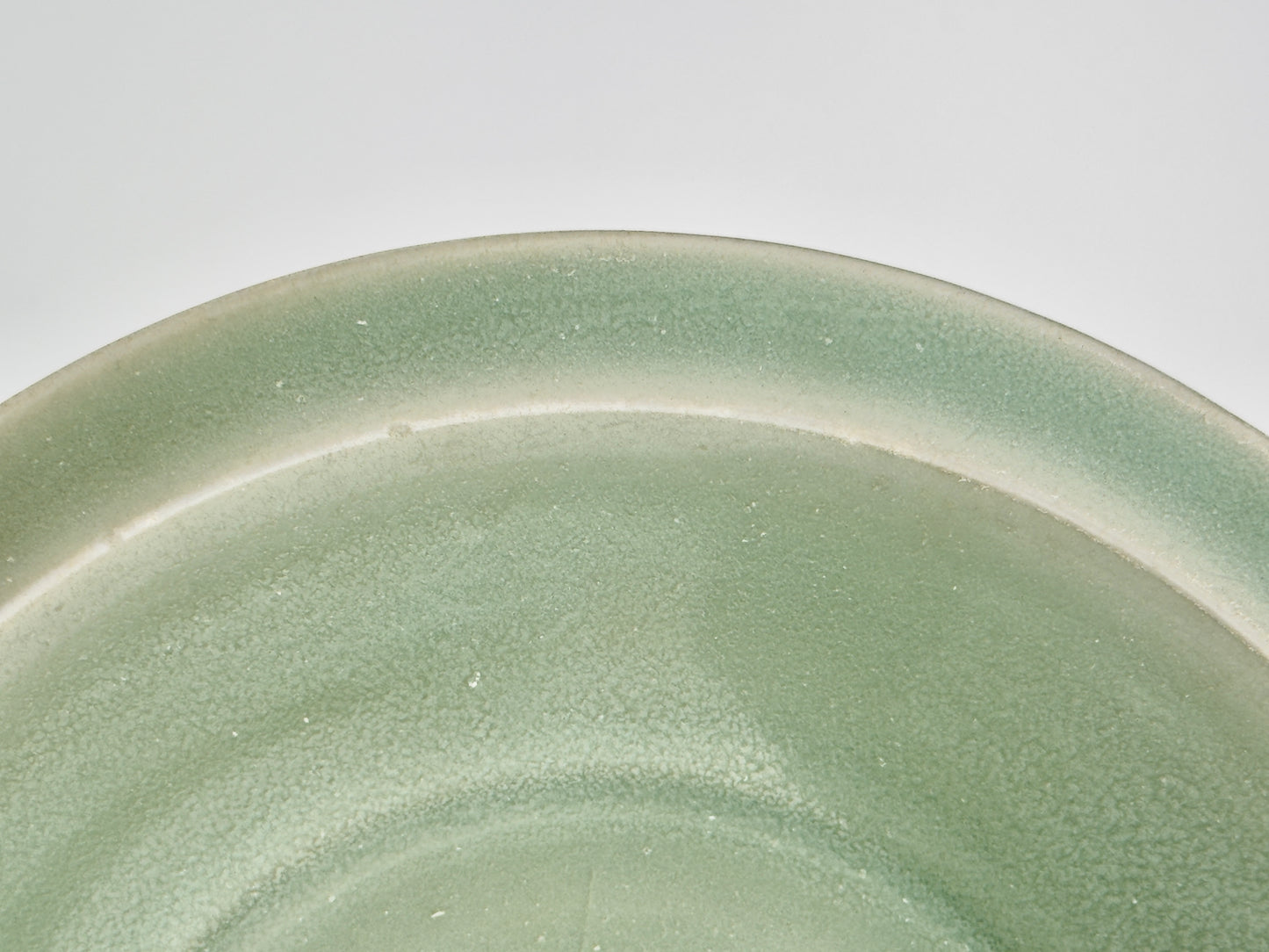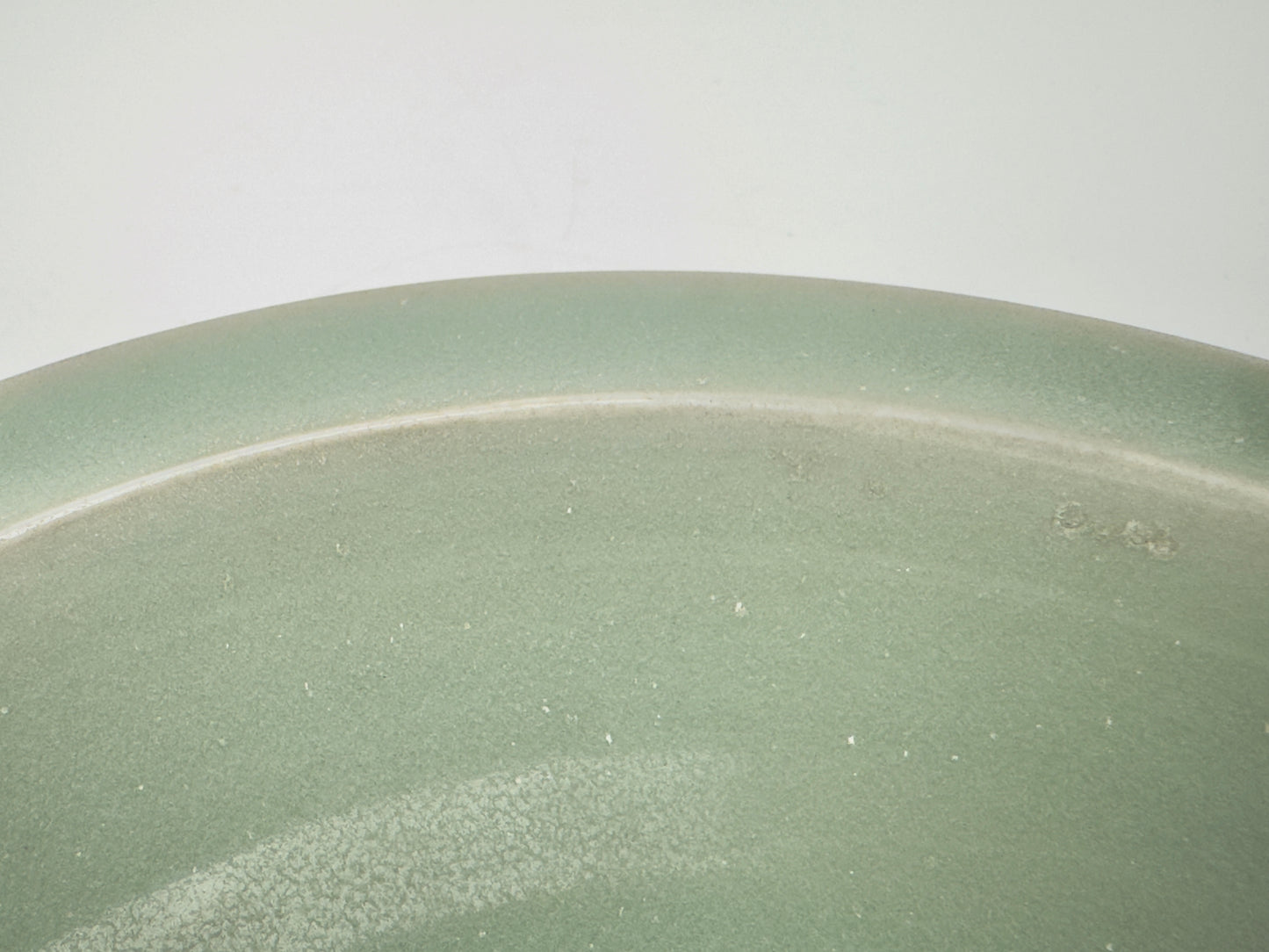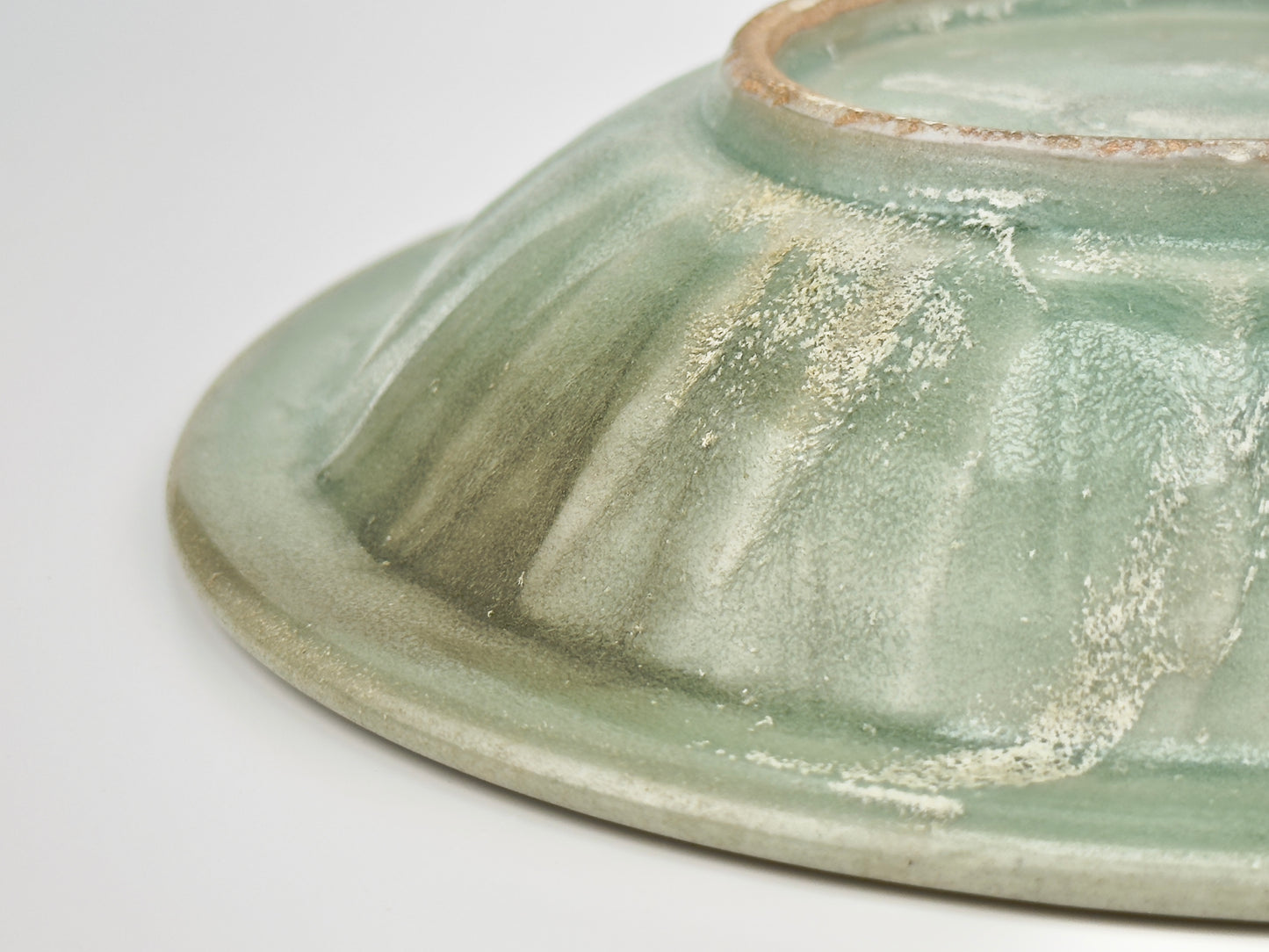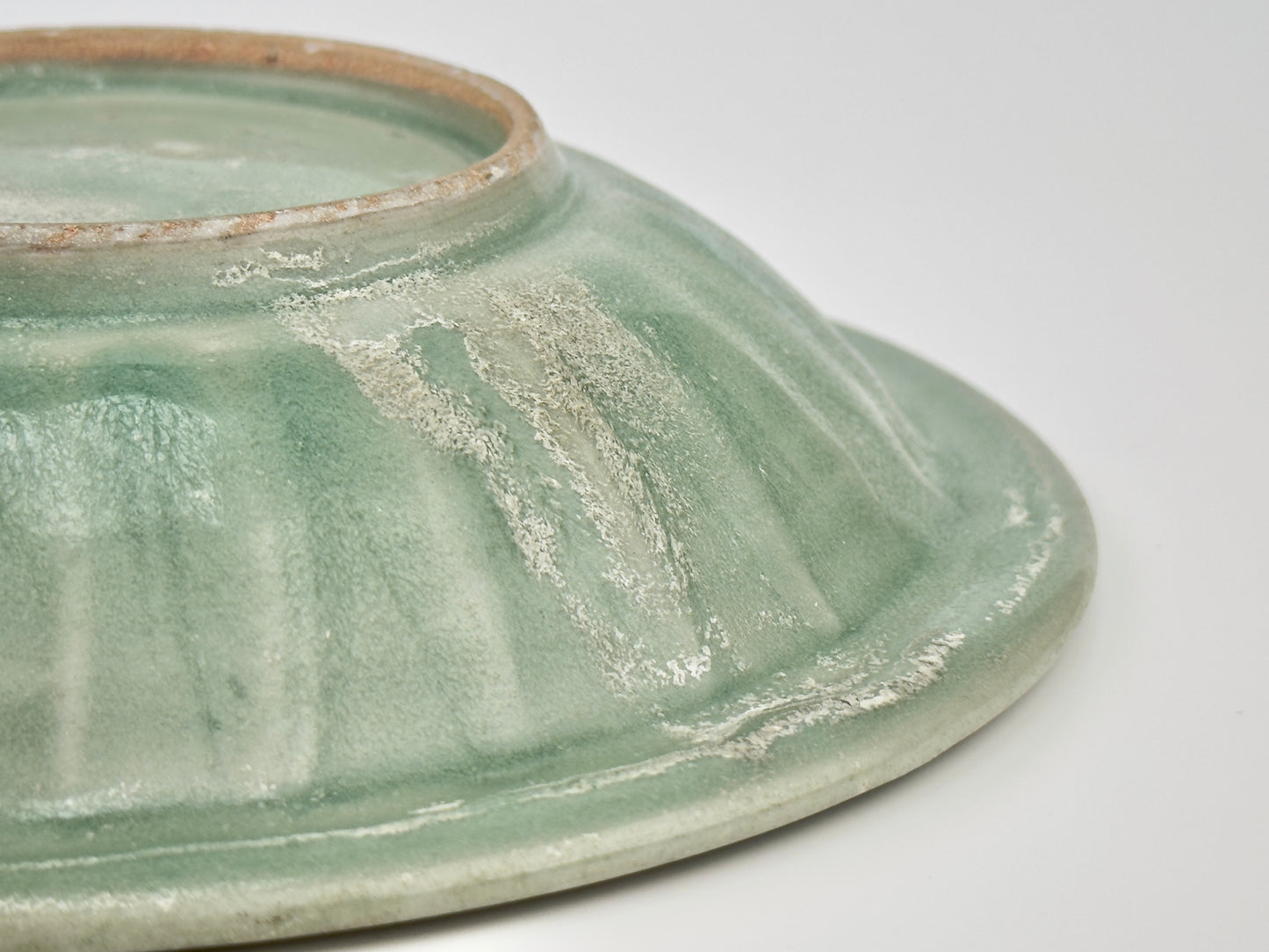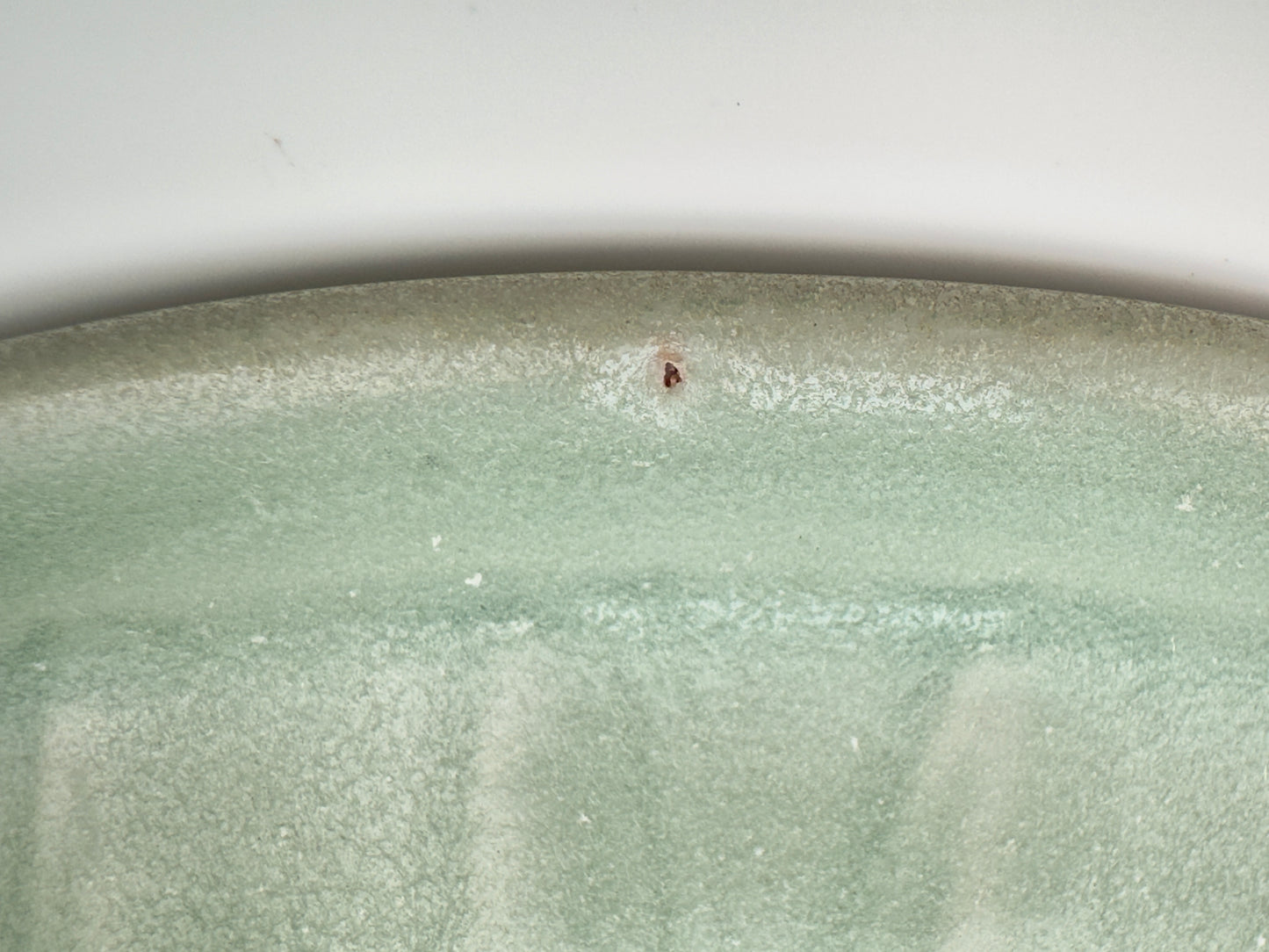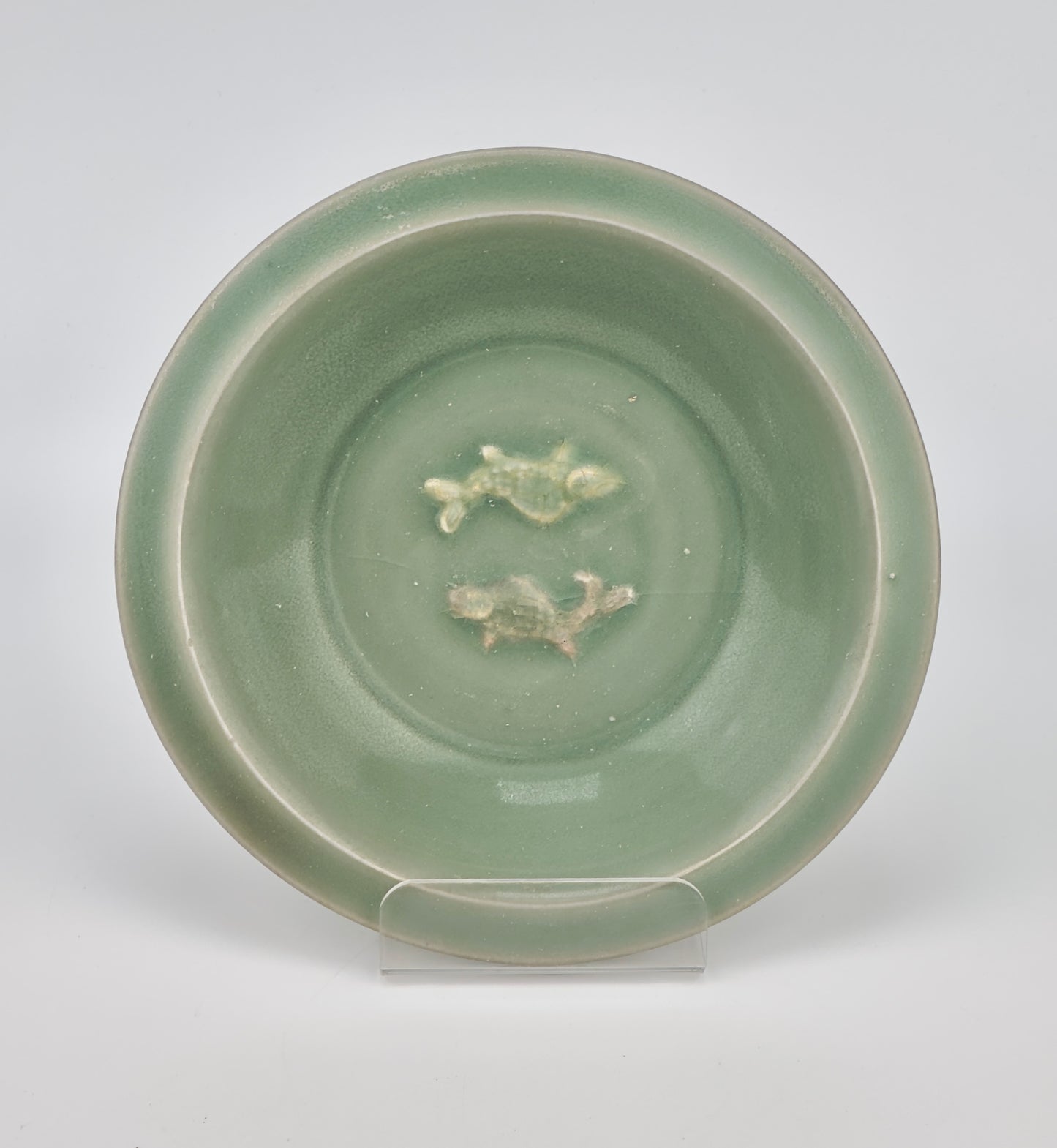AUA Oriental Art
SMALL LONGQUAN CELADON 'TWIN FISH' DISH, SOUTHERN SONG DYNASTY
SMALL LONGQUAN CELADON 'TWIN FISH' DISH, SOUTHERN SONG DYNASTY
Couldn't load pickup availability
The "twin fish" dishes, emblematic of fertility and marital joy, are also recognized as one of the Eight Buddhist symbols. These dishes were prominently produced by the Longquan kilns during the transition from the late Southern Song to the early Ming period. Such dishes have been found in the Longquan area's Southern Song kiln sites, for example, the bowl discovered at Jincun, which is depicted in "Longquan Qingci Yanjiu". Additional specimens can be found in major collections, including the National Palace Museum in Taipei, as detailed in the "Illustrated Catalogue of Sung Dynasty Porcelain in the National Palace Museum: Lung-chu'än Ware, Ko Ware and other Wares", and at the Percival David Foundation, documented in "Illustrated Catalogue of Celadon Wares"
Period : Southern Song Dynasty - Yuan Dynasty
Type : Celadon
Medium : Longquan ware
Size : 4.5 cm(Height) 21cm(Diameter)
Condition : Good(There are traces of excavation (brown discoloration) commonly found on celadon on the back side.)
Provenance : Acquired in early 2000s from Japan
Reference :
1) Sotheby's Paris 18 April 2023 - Asian Arts / 5000 Years - lot137
(Price : 44,450 Euro / Type : Closely related)
https://www.sothebys.com/en/buy/auction/2023/asian-arts-5000-years-2/a-longquan-celadon-twin-fish-dish-song-ming
2) Christies Newyork 21–22 SEP 2023 - Important Chinese Ceramics and Works of Art - lot 1017
(Price : 9,450 USD / Type : Closely related)
https://www.christies.com/en/lot/lot-6439821
* Song Dynasty Longquan Celadon
Longquan celadon refers to a type of Chinese ceramic that was famous for its distinctive glaze and high-quality craftsmanship, primarily produced during the Song Dynasty (960–1279 AD). These ceramics were made in the Longquan region of the Zhejiang province in eastern China, an area rich in the clay and mineral resources necessary for ceramic production.
The most notable characteristic of Longquan celadon is its glaze, which ranges in color from a pale blue-green to a deep olive green. This unique color comes from the iron oxide in the glaze, which, when fired in a reducing kiln atmosphere, produces the green hue. The thickness of the glaze, as well as the firing conditions, could affect the final shade and appearance of the celadon, with some pieces exhibiting a more crackled texture and others a smoother, glossier finish.
Longquan celadons were highly prized for their beauty and durability, making them popular both domestically within China and internationally. They were exported widely, reaching as far as Southeast Asia, the Middle East, and Africa, where they were often considered luxury items and treasured by various cultures.
The designs of Longquan celadon wares varied from simple and elegant forms to more elaborate decorations, including carved or incised motifs inspired by nature, such as lotus flowers, phoenixes, dragons, and foliage. Despite the variations in decoration, the emphasis was always on the harmony between form, glaze, and decoration, with the glaze playing a crucial role in enhancing the overall aesthetic appeal of the piece.
During the Song Dynasty, Longquan celadon was one of several major types of ceramics produced in China, each with its own distinctive characteristics. However, the quality and beauty of Longquan celadon made it one of the era's most celebrated ceramic types, and it continues to be highly valued by collectors and scholars today.
Share

